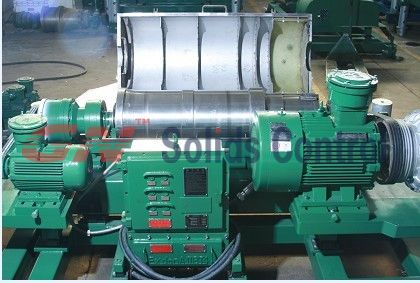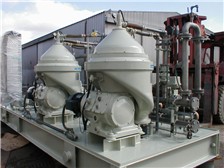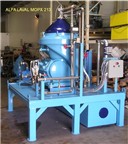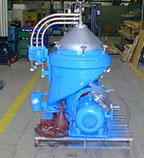It was truly a trial by fire — one that has now become part of Russia’s nuclear marketing message. Cynical as that might seem. In April 1986, as workers and engineers scrambled to keep the Chernobyl nuclear power plant’s molten radioactive uranium from burrowing into the earth — the so-called China syndrome — a Soviet physicist on the scene devised a makeshift solution for containing remnants of the liquefied core.
Teams of coal miners working in shifts tunneled underneath the smoldering reactor and built a platform of steel and concrete, cooled by water piped in from outside the plant’s perimeter.
In the end the improvised core-catcher was not needed. The melted fuel burned through three stories of the reactor’s basement but stopped at the foundation — where the mass remains so highly radioactive that scientists still cannot approach it.
Although 25 years later Chernobyl remains the radiation calamity by which all subsequent nuclear accidents will be measured, core-catchers are now a design feature of the newest reactors that Russia’s state-owned nuclear power company, Rosatom, is selling around the world. That includes a contract the company signed with Belarus just last week, even as radioactive steam was rising from the Fukushima Daiichi plant in Japan.
Meanwhile that physicist, Leonid A. Bolshov, who was awarded a Soviet hero’s medal for his efforts at Chernobyl, is now the director of the Institute for Nuclear Safety and Development, formed in 1988 in the wake of that disaster.
Like many others involved in his country’s nuclear power industry, Mr. Bolshov, 64, expresses what to some ears may sound like a jarringly opportunistic sales pitch: that Chernobyl was the hard-earned experience that made Russia the world’s most safety-conscious nuclear proponent.
“The Japanese disaster will give the whole world a lesson,” Mr. Bolshov said in an interview last week. “After a disaster, a burst of attention to safety follows.”
Opportunistic or not, in recent years the Russian nuclear industry has profited handsomely by selling reactors abroad, mostly to developing countries. That includes China and India — whose insatiable energy appetites are keeping them wedded to nuclear power, despite their vows to proceed even more cautiously in light of Japan’s disaster.
And though Fukushima Daiichi provides a new opportunity to stress the message, Rosatom has long been marketing its reactors as safe — not despite Chernobyl, but because of it.
The Russians say they are now building more nuclear power plants globally than anyone, or 15 of the 60 new reactors under construction today. Rosatom says it has an additional 30 firm orders for reactors and plans to sell more.
Late last year, the company has set a goal of tripling worldwide sales by 2030, to $50 billion annually — a goal that might seem much more doubtful now that Japan’s crisis is making many countries think twice about building plants any time soon.
And yet, while stocks of publicly traded companies in the nuclear industry were falling around the world last week, Russian officials were persistently staying on message with their safety assurances.
The Russian prime minister, Vladimir V. Putin, himself flew to Belarus last week to sign the contract to build a plant in that country, worth $9 billion.
“I want to stress that we possess a whole arsenal of advanced technical resources to ensure stable, accident-free performance for nuclear plants,” Mr. Putin told journalists in Minsk, the Belarusian capital.
And the Russian president, Dmitri A. Medvedev, used the occasion of a visit by Turkey’s prime minister, Recep Erdogan, to praise the safety of Russian nuclear designs. “Even in connection with what has happened in Japan, no radical reconsideration of safety standards is needed,” he said, referring to a four-reactor plant the Russians have contracted to build in a seismically active region of southern Turkey. That deal is worth $20 billion.
Sergei G. Novikov, a spokesman for Rosatom, declined to be interviewed for this article.
Rosatom now charges $2 billion to $5 billion for a reactor, depending on its size and other factors. And despite the claimed safety premium, the Russians still win some business by underbidding competitors that include General Electric and Westinghouse Electric, a division of Toshiba of Japan, according to Marina V. Alekseyenkova, an industrial analyst at the state-owned Gazprombank.
Independent nuclear safety experts say Russia’s reactors for export are as safe as those of their international peers. But that has not insulated the Russian industry from criticism, including the rate of deal-making and the endorsement of nuclear safety to an almost unseemly degree in light of the crisis in Japan.
Igor V. Kudrik, an authority on Russia’s nuclear industry at the Bellona Foundation, a Norwegian environmental group, said Russian reactor designs had indeed improved greatly since Chernobyl, which was built without a containment vessel. But the industry lacks independent oversight in Russia’s politically centralized system, he said, leaving profit motive alone to guide development.
“They promote this technology only because it engages the enormous military nuclear industry left over from Soviet times,” he said.
Pressurized water reactors, like the Rosatom VVER that is the company’s current standard, and the 40-year-old General Electric Mark I boiling water reactor at the Fukushima plant, are inherently safer than Chernobyl-style reactors.
In both boiling water and pressurized water reactors, water cools the fuel and sustains the nuclear reaction. The water that floods the spaces between fuel rods slows neutrons, necessary for the reaction. Thus, in both designs, if the coolant is lost the reaction will stop, following the laws of physics — though, as the disaster-management team in Japan knows all too well, the shutdown does nothing to dissipate still-dangerous residual heat.
So, despite Rosatom’s core-catcher feature for arresting meltdowns, its reactors may be as potentially vulnerable to release of radioactive material if the water-cooling system failed — as happened at Fukushima Daiichi.
But whatever the reactor design, operational safety procedures are crucial. And the Russians contend that their industry and engineers benefited more than others from the lessons of Chernobyl, including the stark reality that most reactors are poorly equipped to contain a full core meltdown.
Rosatom says a reactor it completed in 2007 in Tianwan, China, is the first in the world with what the Russians call a core-catcher built in. It was partly designed by Mr. Bolshov, the physicist who jury-rigged the barrier under Chernobyl.
The contemporary Rosatom core-catcher is a pool in the basement of a reactor filled not with water, but a metallic alloy. Solid under normal circumstances, it is designed to liquefy if the hot, melted-down core drops into it after burrowing through the floors above. Once the whole metallic pool liquefied, Mr. Bolshov said, heat from the continuing nuclear reaction would create currents, swirling the mixture against water-cooled steel walls.
The Russians market it as a final safety net in the last stages of a nuclear catastrophe.
And they say it is a solution to the problem of a China syndrome. It has not, of course, yet been subjected to real-world testing.
Russia is heavily invested in convincing other countries that these systems can make nuclear power safe.
As a legacy of the cold war, Russia possesses about 40 percent of the world’s uranium enrichment capacity. That is much more than it needs to service its domestic reactors, meaning the industry relies on exports. (Enrichment refers to raising the level of the uranium isotope 235 from about 0.7 percent in natural uranium to 3 percent to 5 percent for civilian reactor fuel.)
Russia exports about $3 billion worth of fuel a year. Rosatom says it intends to increase its share of the global nuclear fuel market to 25 percent by 2025, from 17 percent today. The strategy is to make money, but also to offer fuel at a discount to customers who buy Russian-made reactors.
The current threat to the market, for the Russians and others in the industry, is real. In the short term, Germany’s decision last week to close seven of its 17 nuclear plants, and the probable delays of planned reactors elsewhere, will diminish demand for uranium fuel.
The McIlvaine Company, a Northfield, Ill.-based energy consultancy, estimated last week that two-thirds of all new reactor projects will be delayed after the Fukushima Daiichi disaster, and that over five years $200 billion in energy investment globally will be redirected from nuclear to coal, petroleum or other alternatives.
Shares in publicly traded companies in the Russian nuclear power industry have plummeted in the wake of the disaster, as have shares in uranium mines and nuclear companies elsewhere.
And even as Russia seeks to export reactors backed by Rosatom’s safety assurances, back home tight money has delayed plans for replacing some aging nuclear plants. That includes 11 Chernobyl-style reactors — the ones without containment vessels. Or core-catchers.
source: www.nytimes.com













